An Intimate Account of the Political Protests in Rio de Janeiro
From the Series: Protesting Democracy in Brazil
From the Series: Protesting Democracy in Brazil
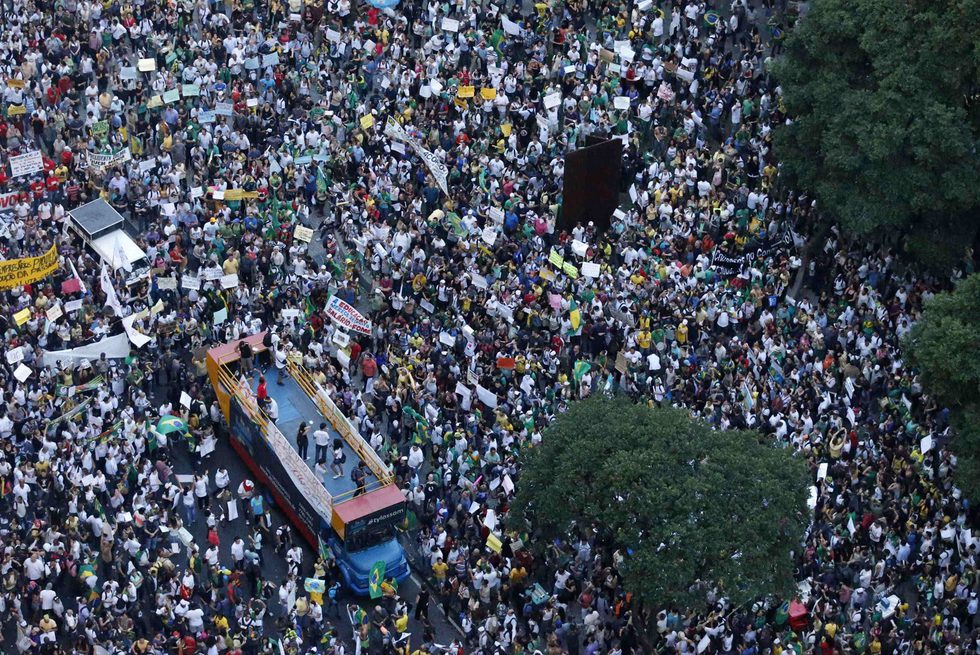
It's not easy, I ask for public mobility and the government sends Skull against me.
—Popular refrain during the demonstrations. “Skull” is the nickname for one of Rio de Janeiro's elite Special Operations Police Corps.

During the demonstrations, policemen acted in accordance with their military training, a sight rarely seen by those who do not live in the slums. Demonstrators were injured and repressed, and the policemen’s actions revolted thousands of pacific protesters in different cities all over the country. The policemen violently repressed the “enemy” that, in some cases, could be anyone walking through the streets where the rallies were occurring. Many newspapers tried to blame the population beaten by calling them vandals and troublemakers. Since the police repression did not decrease and the number of demonstrators increased—with journalists and “good people” also being assaulted—major media outlets, in newspapers and on television, justified the police violence by reporting on the presence of a “small group of vandals,” bandits who were tarnishing the history of Brazilian peaceful protests with their aggressiveness and violence.
The media criminalized one side while neutralizing the other. It did this by sensitizing a third group of distant observers who followed the demonstrations through the newspapers and on television. This media strategy seem to prompt this group to choose a “side.” The strategy is not new, being used to justify the actions of the police in the favelas by polarizing squatters as villains and the police as heroes. In the case of the events of June and July, the polarization deprived readers of a deeper reflection on marginality, while helping to justify the violence used by the state against the two groups, in other words, against the demonstrations.

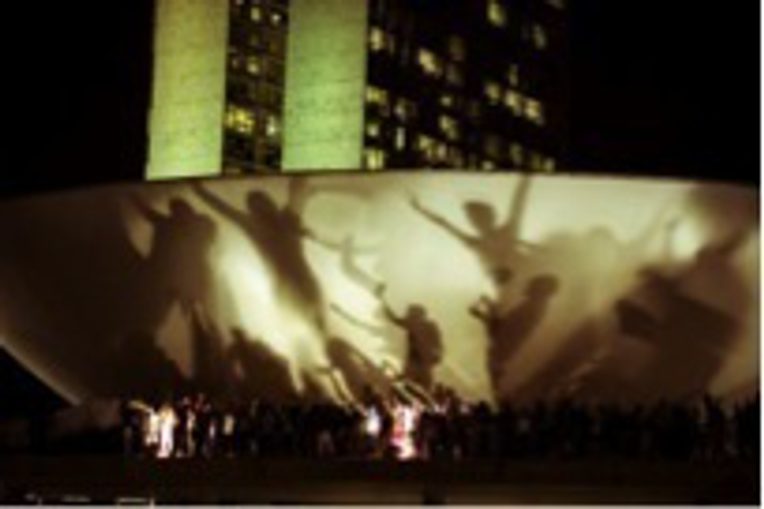


During the demonstrations, I carried a handkerchief around my neck and some big swimming goggles because I thought they could protect me from bullets and gas. Through the images I had seen and the experiences of other protests, there was no doubt that the police were aiming non-lethal weapons directly at people’s faces and within a short range.
There were those who sang the National Anthem, those who walked wrapped in the national flag, those who had yellow and green colors on their faces, and those who carried flowers and dressed in white. There were those who were happy, as though it was Carnival, those in the streets for the first time, and children either walking by themselves or being carried on parents’ shoulders. There were both young people and the elderly. There were political parties, social movements, and the faces of a few known militants that we could spot from time to time among the crowd.
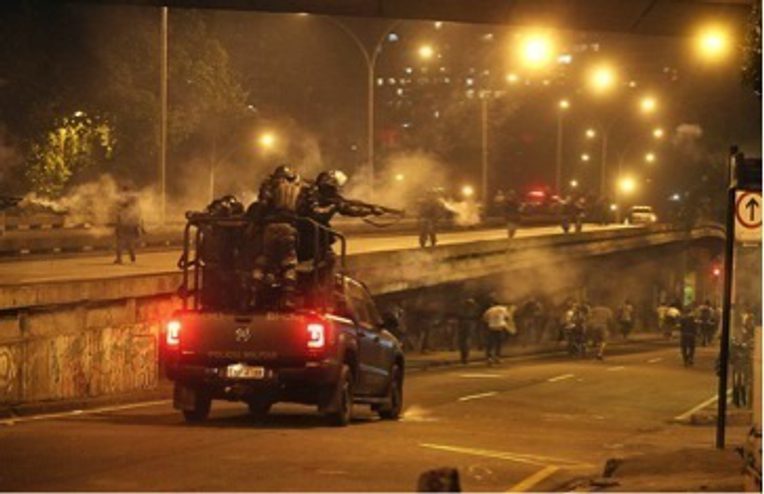
Suddenly, we entered an area that was darker. The avenue was narrowed to two lanes that were divided by a canal. Behind us, a large group of men were laughing loudly and threatening everybody by saying terror could begin at any time. They scared us with the sound of a stun gun that one had in his hand. We moved to the sidewalk, fearful, trying to protect ourselves. As if they were holding dogs on a leash, they were right behind a group of kids who obeyed a few of their orders, wearing shirts to hide their faces. One of them yelled right after we heard the sound of the gun. Amid the laughs, one of the men yelled “Run, run,” “Look at the thief,” and, “Catch the bum,” and the boys immediately ran between protesters. As we were losing sight of them, we could see the despair they were producing among the mass of people after they had passed. After all, they were policemen in plain clothes in the crowd.
After this incident, only a few of us decided to stay in the demonstration. We tried to walk to the end of the march, but were stopped by a group of scared people running toward us, complaining about the gas and police violence. We tried to persist, but soon the bombs (so called “moral effect gas”) were pushing people in our direction, forcing us to retreat to the nearest street. The air burned our eyes and throats and the sound of the bombs echoed from everywhere. A few days later, a resident of Morro da Providência who was not with us during the march said that she saw the gas falling from the helicopters and felt as if her face was melting.
We held onto lampposts to avoid being taken by the crowd. We shouted so that people would not run, but the feeling of panic, mixed with pepper gas, had already begun to circulate. We continued to walk a through the avenue and there was still a large crowd walking toward City Hall. Against the flow, we walked toward the neighborhood of Lapa, along with the hundreds of people, passing by bars full of customers. At this point, the Confederations Cup game in Maracanã was replaced by images of the march on the television sets. It was all very new to the “country of soccer.”
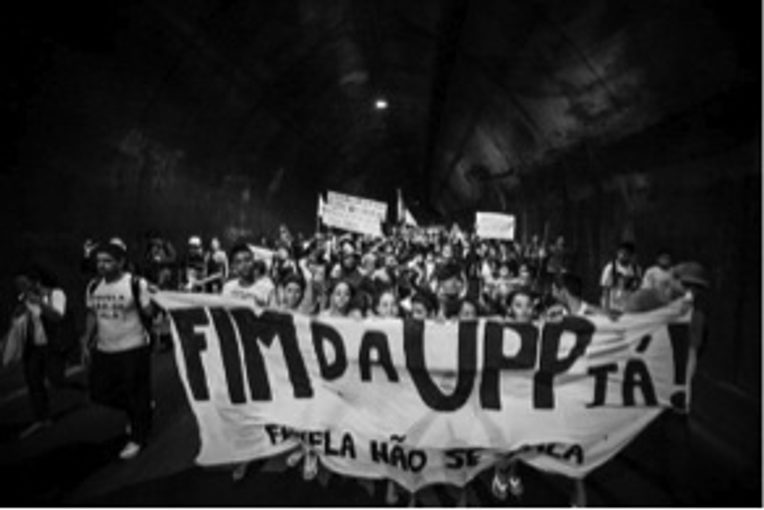
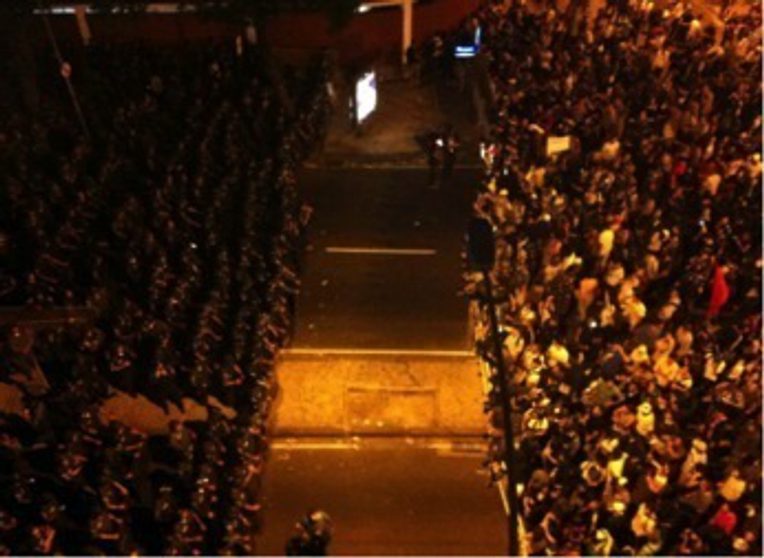
After June 2013, a large number of demonstrations would still take place, but the claims of the groups who remained on the streets became more objective: the protesters wanted wholesale change, not a renovation. Slum residents, supported by social movements, began organizing their own demonstrations and occupying the streets near their houses and those downtown. We do so for the transformation of the repressive, aggressive, and bloodthirsty training of the police, and this transformation is endorsed by everyone as a necessary change in our lives. Only with this transformation will we build the city as a space for an expression of citizenship and as a shared urban locus, not tolerating the use of different intensities of repression as a mark for different groups, ethnicities, and locations.